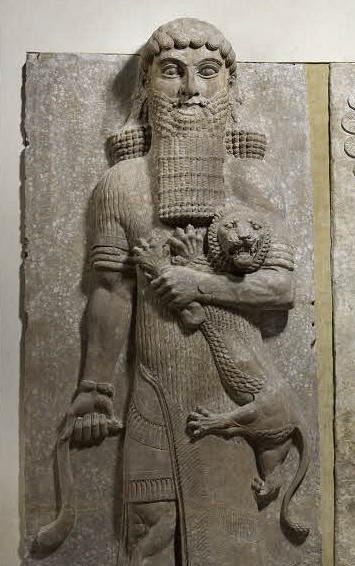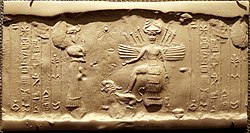Ancient Mesopotamian Underworld
The History of Hell
Many Christians today are unaware of the origination of the doctrine or history of hell and may erroneously assume that it is original to Christianity and/or Judaism. There is, however, a lengthy and thorough history of hell and the underworld from various ancient civilizations that predate Christianity by as much as two millennia. Understanding this history of the underworld clarifies our modern understanding of the doctrine of hell in multiple ways, primarily in how we see the evolution of the concept of punishment in the afterlife and how it unfolds during the time of Jesus. Therefore, in this initial blog post, I want to explore the preliminary concept of hell in the earliest societies we have discovered through archaeological findings.
Overview
Somewhere between four and five thousand years ago, the cultures of ancient Mesopotamia—Sumerian, Assyrians, Babylonians, and Phoenicians (aka Canaanites), all believed in an type of underworld. Though many of them had divergent beliefs, there are some remarkable similarities between them. For example, they all had a belief that the underworld was just that—geographically located under the world in which we live. From the earliest times, a belief that individuals went to a location beneath the earth after death was perhaps due to burying somebody in the ground. Similarly, many societies in the earliest times did not have a concept of the modern form of eternal torment of souls but was simply a place where people went after they died.
Eventually, much of the early thought process regarding the evolution of the underworld made its way into Christianity. It is interesting to see how the view of the underworld grew and evolved over time from the earliest of civilizations and how it transformed into what we commonly know today as eternal torment in the afterlife, or better known today as just “hell.”
Ancient Mesopotamia
Mesopotamia (Greek word for “between rivers,” meaning the Tigris and Euphrates) is not one single place but encompasses much of what we know of today as modern Iraq. This is the place where we have the initial account of the land of the dead baked on clay tablets from the Tigris-Euphrates Valley that sits just north of Iraq. This narrative is known as The Epic of Gilgamesh, which tells the tale of a hero-king who goes on a journey searching out immortality. It recounts the actions of Gilgamesh, the king of Uruk (a city in Sumer), and his best friend Enkidu (EN-kee-do), who caused offense to the god of the underworld, Inanna, by refusing her advances of casual sex. As a result, they are told one of the two must die.
Enkidu subsequently dreams of a dreary, dusty underworld and falls sick and dies. Gilgamesh is grief-stricken and determines to avoid this fate and search out the only man who has ever become immortal: Utnapishtim [oot-na-PISH-tum] (He is the earlier version of Noah, who built a boat for a flood to save his family along with all the animals). The fear of death begins Gilgamesh’s journey towards the path and is the thesis of this ancient Babylonian epic.

Gilgamesh Sets Out
Gilgamesh’s journey is the crux of the rest of the story and sees him go through many obstacles to find immortality. However, there is another version of Gilgamesh on an Akkadian tablet involves the same two characters of Gilgamesh and Enkidu, just with a different storyline.
In this one, however, Gilgamesh makes two wooden objects that mysteriously disappear into the earth and have gone to the underworld. He then sends Enkidu to find them with instructions on how to retrieve them without being imprisoned in the underworld. Enkidu, of course, disregards the instructions and subsequently falls to the underworld. The god Ea (EE-ah) commands the god of the underworld to open a hole and send the ghost of Enkidu up to meet with Gilgamesh so that he can give an account of what the underworld is like.
Next, Enkidu informs Gilgamesh of his son, whom he found sitting in “a crevice full of dust.” The underworld in this epic is a gloomy, dusty place that no mortal can come back out of, hence why Ea sent Enkidu back to inform Gilgamesh of what it is like down below the earth. While not exactly similar to our modern concept of hell, it does appear to be a precursor similar to the Jewish version of Sheol in the Hebrew Bible (found HERE).
The Descent of Inanna
Similarly, in ancient Sumerian tales, the “Harrowing of Hell,” is an early descent motif that has a god descend into the land of the dead (called the Kurnugia [kur-NOO-gia] in this story) and then ascends back to the land of the living.
For some reason, the Sumerian goddess Inanna (also known by many other names in various cultures, one of which is Ashtoreth known from the OT) decides to visit her sister, Ereshkigal (air-ISH-ka-gawl), down below. Essentially, Inanna is trapped below, and after she goes on a journey through many gates of the underworld, she can then return to the upper world provided she can find a ransom for herself. Her ransom ends up being her shepherd Dumuzi (do-MOO-zi) who incurs the goddess’s wrath because he thoroughly enjoyed her absence. However, they eventually reach a compromise, and Dumuzi only has to stay in the underworld for six months out of the year and can return topside for the other six months.

Precursor to Other Myths
This story serves as the earliest motif of the “dying-vegetation-god myths” that are all too common in ancient religions. The most well-known are Osiris and Isis (Egypt) and Persephone and Hades (Greek mythology). Essentially, these are the gods responsible for blooming flowers, plants, and trees because they control whatever comes up from the ground since they are in the underworld. Since they are only down there for six months and can only control the plants and trees for the time they are present, it serves as a reason why people explain vegetation growing for only half the year in ancient times.
Conclusion
These ancient stories about the underworld are crude workings of the beginning of the evolution of life after death. Though not exactly like how we understand the realm of the dead today, it is the primer for later beliefs and has many parallels with the Biblical accounts. I know these history lessons may not be the most exciting blogs to read, but they are foundational for later understandings of the Christian concept of hell.
Next blog post on the Ancient Egyptian underworld is HERE
Further Reading:
Encyclopedia Brittanica article found at: https://www.britannica.com/topic/hell
Turner, Alice K. The History of Hell. New York, NY: Houghton Mifflin Harcourt Publishing, 1993.
Crisafulli, Chuck and Kyra Thompson. Go To Hell: A Heated History of the Underworld. New York, NY: Simon and Schuster Publishing, 2005.
Ehrman, Bart D. Heaven and Hell: A History of the Afterlife. New York, NY: Simon and Schuster Publishing, 2020


